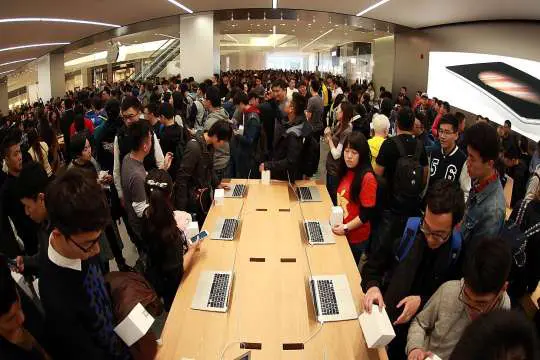(THE STRAITS TIMES)Big metropolises like Beijing and Shanghai no longer rule the roost of economic opportunities in China, with smaller cities now racing ahead as their increasingly cashed-up residents drive the future of consumption in the country.
Forty-six million additional upper-middle-class and affluent households will emerge in China over the next five years, of which half that number will likely be located outside its top 100 cities, according to a report by consulting firm BCG and AliResearch, a unit of Chinese e-commerce giant Alibaba. These are typically classified as fourth-tier cities or lower.
"Companies will have to venture far beyond China's biggest metropolitan areas to win the loyalty of upper-middle-class and affluent households," said the report which was released this month. It was titled The New China Playbook: Young, Affluent, E-savvy Consumers Will Fuel Growth.
"There are high concentrations of such households in more than 2,000 cities and we estimate that to reach 80 per cent of this market by 2020, companies will need to establish their presence in 430 cities," it added.
Upper-middle-class households are defined in the playbook as those with a disposable income of between US$24,001 and US$46,000 (S$33,700 and S$64,000) while affluent households enjoy an income of more than US$46,600.
The "dramatic" rise of these two classes, in particular, will drive spending and lead China's consumer market into a new era, despite growing concerns over the state of its weakening US$10 trillion economy, the report said.
By 2020, for instance, the number of these households is expected to double to 100 million and account for 30 per cent of all urban households, compared with 17 per cent currently. They are also expected to make up 55 per cent of Chinese urban consumption and 81 per cent of its incremental growth.
"Although the pace is slower and the course is bumpier, consumption growth is still tracing a staggering trajectory. China's consumer economy is projected to expand by about half, to US$6.5 trillion, by 2020 - even if annual gross domestic product (GDP) growth cools to 5.5 per cent," the report noted.
"The incremental growth of US$2.3 trillion over the next five years would be comparable to adding a consumer market 1.3 times larger than that of today's Germany or Britain," it said.
Spending patterns in the world's No. 2 economy are also changing as the ranks of the wealthy grow. Services rather than physical goods, for instance, are becoming China's main consumption growth engine, a trend attributed to the rapid rise of the upper middle class.
"As consumers enter this income segment, the consumption of luxury goods, automobiles, wine and overseas travel increases sharply," the report said. It added that the wealthy also spend 3.3 times more on education, culture and entertainment than emerging-middle and middle-class households.
Businessman Wang Chengjia, 39, from the small north-eastern city of Hulunbeier in Inner Mongolia, is no stranger to this trend. Now part of the "affluent class", he has observed the expenditure patterns of his family change as the car trading business he set up in 2003 gradually took off.
"Compared with a few years ago, of course we are spending more now. While we could only think about buying branded goods back then, we can actually afford to buy European brands like Louis Vuitton now," he said. "Other areas we are also spending more on are health products and overseas travel."
But two other mega trends are also driving growth in Chinese demand, the report noted. They are the increasingly powerful role of e-commerce and a new generation of sophisticated consumers who are not only bigger spenders but also more brand-conscious.
"The growing role of richer, younger, Internet-savvy consumers will boost demand for different kinds of products purchased through different kinds of retail channels. This emerging consumer class will transform the structure of China's economy," it added.
 简体中文
简体中文

